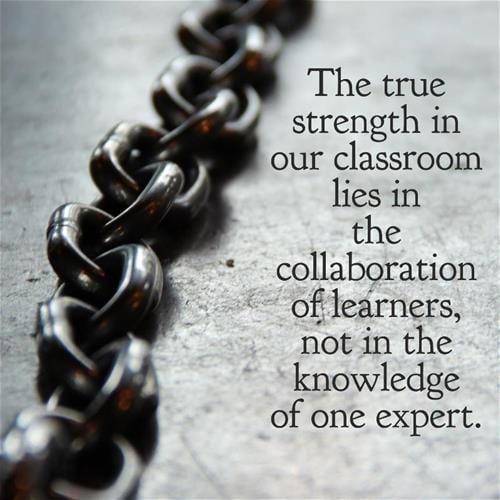DOE’s John King, checking on school equity progress in Connecticut, seeks nationwide solutions.
By Wayne D’Orio, School Leaders Now senior editor
The data is clear: Students attending high poverty and high minority schools are more likely to have inexperienced teachers and inexperienced school leaders. This fact only exacerbates the achievement gaps that already exist between low-income students and higher-income students and between students of color and white students.
School inequity has been a major focus of the Obama administration. Last week, Obama’s DOE Secretary John B. King Jr. was in Connecticut to check on the state’s progress in narrowing resource and achievement gaps.

DOE Secretary John B. King Jr. talks about school equity.
The event was sort of an unofficial wrap on King’s time in office. He took over for Arne Duncan almost exactly a year ago and was approved by the Senate in March. His term expires next month as the Trump administration takes control.
King made history by becoming the first Latino and first principal to become the DOE secretary. He noted last week he was also the first student kicked out of high school to lead the department. “I hope I won’t be the last,” he said, recalling how various teachers helped him save his life after he was orphaned at 12 while living in New York City. It is because of these experiences that King can address equity from both a professional and personal outlook.
Wisdom gleaned from last week’s day-long Educator Equity Lab yielded best practices applicable nationwide:
#1 Seek the advice and expertise of those most affected by a lack of equity.
Connecticut’s Educator Equity Lab includes representatives from the state’s eight poorest districts. Together, they brainstormed ways to fight the longstanding problems. “We have important progress to celebrate,” King said, looking back on gains made during the Obama administration. “But we know we have work to do.”
Educators from these cities shared various takeaways from the day, as King listened and nodded along. One by one, educators listed the takeaways as they built their action plans. Two prevailing recommendations: addressing gaps in educators’ cultural consciousness and zeroing in on the most effective uses of per-pupil expenditures.
#2 Actively recruit potential teachers and work harder to retain them.
Teacher recruitment can be a forgotten issue when talking about the inexperienced teachers that so often populate low-income schools. These schools rarely have the time or resources to reach out to try and attract more potential teachers. King highlighted one of the problems when he said that while more than half of the students in the country are children of color, only 18 percent of teachers are minorities.
To improve teacher-force diversity, state officials in Connecticut are strengthening ties with local colleges and putting together programs to retain teachers once they start. “We need to help young people celebrate the profession,” said an area superintendent. She suggested creating teacher clubs at the school level as an informal way to promote camaraderie among teachers. An administrator from Waterbury suggested using teacher surveys to identify potential problems early to prevent teachers from leaving the profession.
King warned the officials to avoid the “invisible tax” levied against some minority teachers, for instance when Latina teachers are expected to translate all messages from non-English speaking parents, or when African-American male teachers are expected to intervene when boys of color are struggling. “This [kind of unofficial extra duty] is a threat to our retention and it also sends a message about institutional responsibility.”
#3 Collaborate, collaborate, collaborate.
One of the key takeaways of the day? None of the districts in the state were equipped to deal with inequity on their own. Consequently, by collaborating in the all-day event, the 100 or so attendees were able to brainstorm with others and create partnerships going forward.
The state’s Equity Lab is part of the federal Excellent Educators for All Initiative. Each state compiled their strategies into plans, and these plans and ideas can be accessed here. Connecticut’s data show the percentage of teachers who are inexperienced (with five years or less in the profession) in the state’s eight poorest districts rose slightly in the last five years. In 2011-12, 20 percent of teachers in these districts were inexperienced; today 22.2 percent of these teachers fit that criterion.
#4 Stay focused on the end goal and your students.
King summarized his comments by telling the administrators he focused on two students every day as he seeks to improve the country’s schools. One student named Herman was a boy who King knew when he was a middle school principal. While Herman had overcome problems in his life, he was killed by a gunman in a case of mistaken identity, King said.
“I think about Herman every day and the tremendous potential that was lost to the world. But I also think about the young man who killed him. That young man at one point was a five-year-old eager to be called on by a teacher, too. Both of their potential was lost. This equity work is about that, saving lives.”
The second student was Tetsiana. She was a shy student who was encouraged to mentor other students. After graduation, she went onto to Boston College and came back to teach at the same school she had attended.
“So for me, the question every day is how to we lose fewer Hermans and prepare more Tetsianas,” King said.
To read D’Orio’s previous column–on a high school class based on the hit cable TV show, The Walking Dead, click here.
[custom_author=WayneD]
